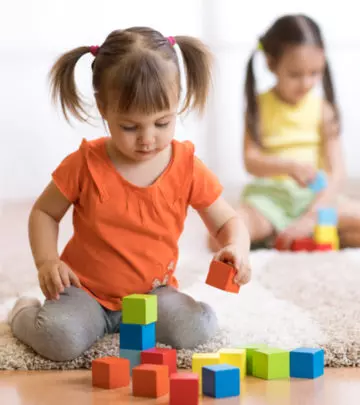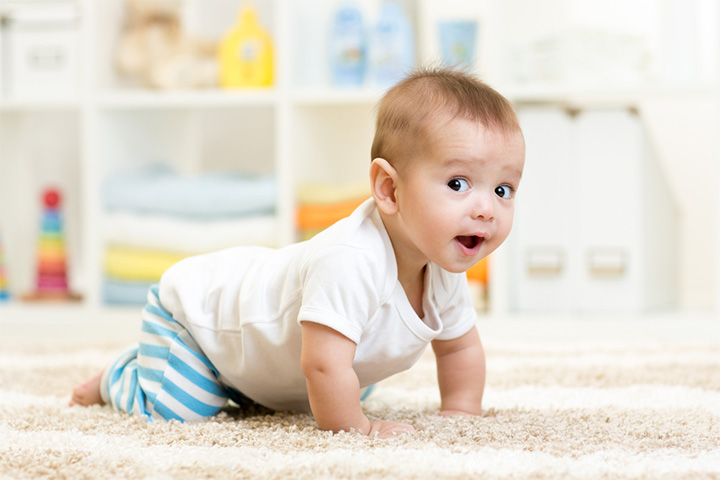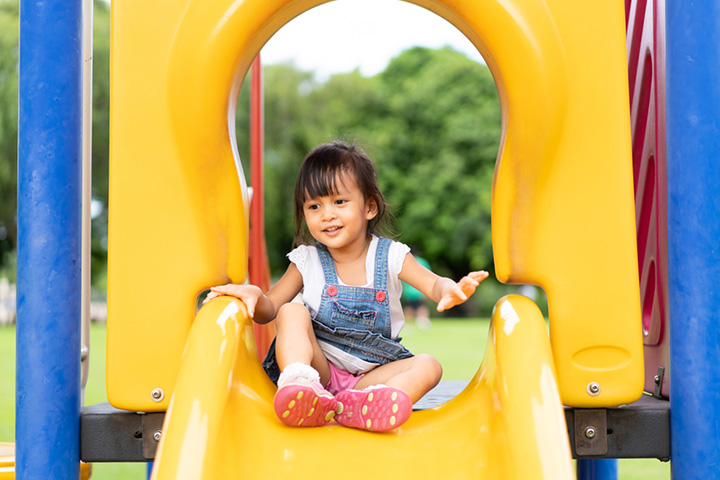
Image: Shutterstock
You know that spark in the eyes of a toddler when they see something new? It is their brain registering that object. Their neurons are working at the speed of light to determine the color, shape, and game plan of taking it from your hands!
You must have read that the brain develops the most in the first five years after birth (1). The process of brain development begins when the baby is still in the mother’s womb and continues through adulthood. In the first 1000 days, the brain absorbs knowledge and skills like a sponge. So most of the activities, and understanding that progress through the stages develop when you are still a child.
If you wondered why the development reduces after 1000, we would tell you. The driving force of development is the millions of brain cell connections that start even before birth (2). These connections keep developing into complex skills and abilities as they grow through life stages.
As intriguing as it is to know exactly what your little one is thinking or how they learned something new, we have a little cheat sheet that holds all the benchmarks of their mental development. Here are the first 1000 days of development in a child’s brain that will help you understand the pattern of what your child will learn next!
The Womb
Image: Shutterstock
A fetus is always in the growing stage, and the two main processes that go in in the womb are neurological migration and cell creation (3). This is to assign the work to brain cells and move them where they should be placed, for example, the motor complex helps you with your motor skills, and the hippocampus stores memories (4). Genetics could affect the migration; for example, if the genes contain dyslexia, it could affect how the neurons migrate (5). The placement of the brain cells before birth accounts for the child’s reading skills.
Babies develop their motor skills in the womb itself. Touch is the first sense that the child develops (6). In 11 weeks, they use their hands and feet to check out the environment and their own bodies. This is when the kicks are received in the womb!
The hearing skills also kick in early during the 20 weeks of gestation (7). They can respond to vibrations of their mother’s heartbeat and even their parents’ voices. Eyesight too develops during pregnancy, but it is not as complete as hearing. The visual acuity is about 20/200 and is primarily blurry (8).
Birth To 12 Months
Image: Shutterstock
Once the child is born, the development process is continuous and clear. Three primary processes are going on, and once one stops, the other carries it forward. One of the processes is the neuron making connections with the other (9). This helps wire different parts together to communicate effectively. The second part is pruning when it finds unused connections and pulls back from them. The third is myelination, in which the development of white cells occurs (10).
The milestones are diverse and from lifting their own head to eventually sitting up, it includes smiling, recognizing a face, and even learning a language. Babies experience a sensitive period in which the brain reacts strongly to language and information. The brain links to cognition and auditory information and learns the language they hear around them.
1 To 3 Years
Image: Shutterstock
This is the stage where your child develops the sensory neurons and improves motor skills. The cognitive functions of the brain begin acting around the preschool age. There is a further development of the complex brain system and it begins interacting. There is development in regions that support logic, reasoning, and even processing (11). This is also when they learn to share their toys and realize which ones are theirs.
During this time, the child learns to kick, walk, climb, and even draw. They can point to objects and love the idea of their newfound independence. You might discover your child suddenly saying the first line of their favorite poem. The coalescing system helps them understand instructions and have basic conversations.
4 To 6 Years
Image: Shutterstock
The fusion in the brain continues along with myelination and pruning. It enables the toddlers to read and learn complex skills and concepts. Reading involves taking areas of the brain associated with visual processing. Before this, we link spoken language to visuals like finding the tiger in the jungle. Now at the age of 4, we link language to visual cognitive processing and go along reading word to word. This can count as reading rhyme, identifying colors by spelling, drawing different things, focusing on tasks, and recognizing their environments.
So now that you know how crucial the 1000 days are from the moment your child is born, these milestones will definitely help you keep track of your child’s development. However, not every child follows the book, and milestones are not a perfect science. It might be quicker for some children and slower for others. We understand your urge to panic when your child does not do what the book says, but it is essential to stay calm. Your pediatrician will analyze what your child needs and tell you how to encourage them in their physical and mental development.
















